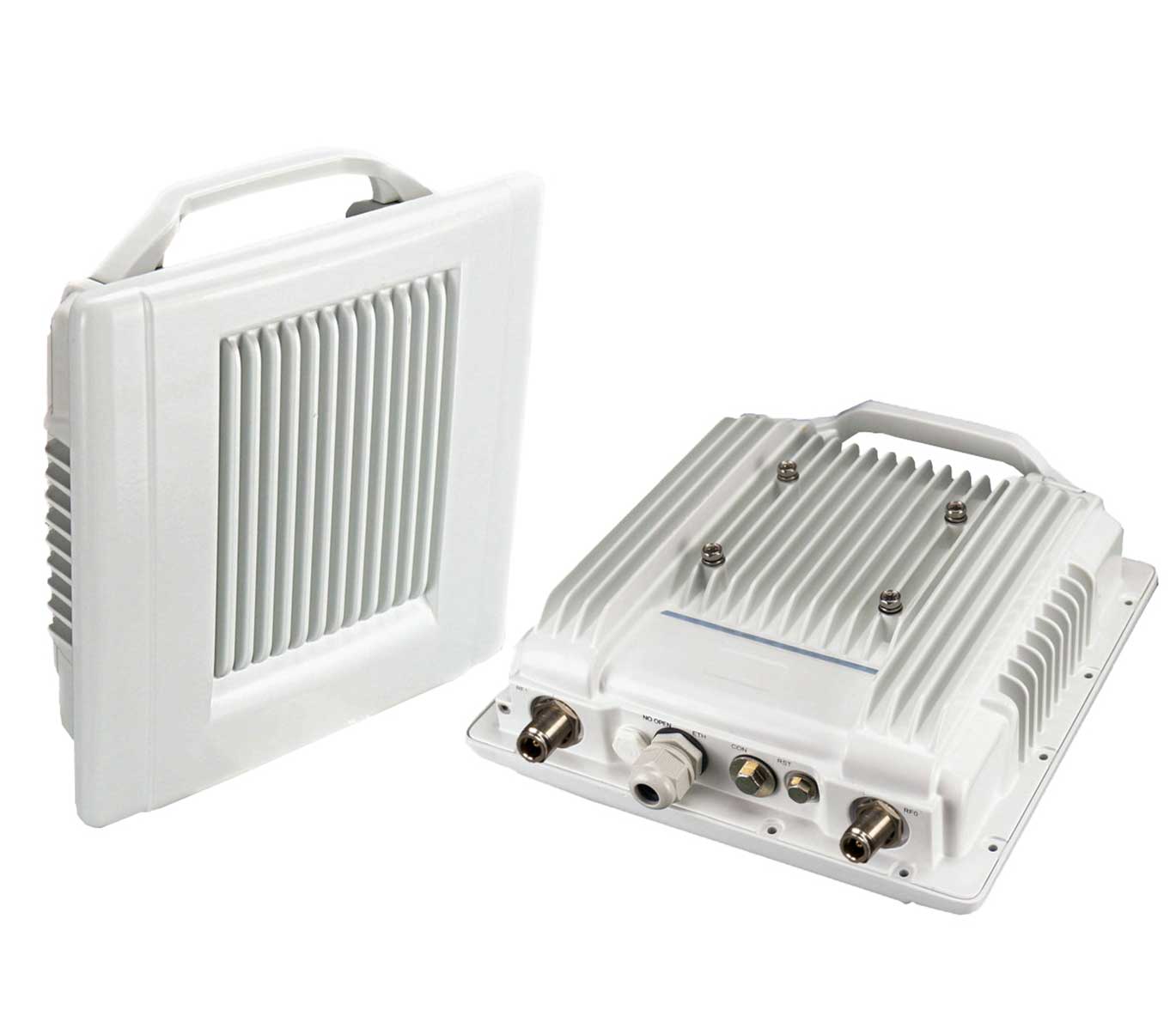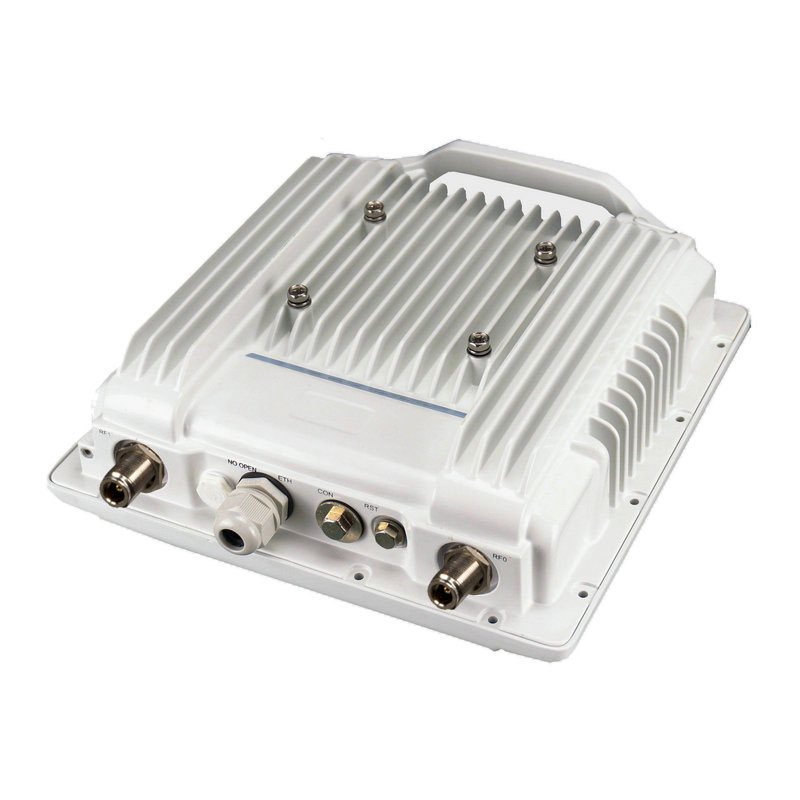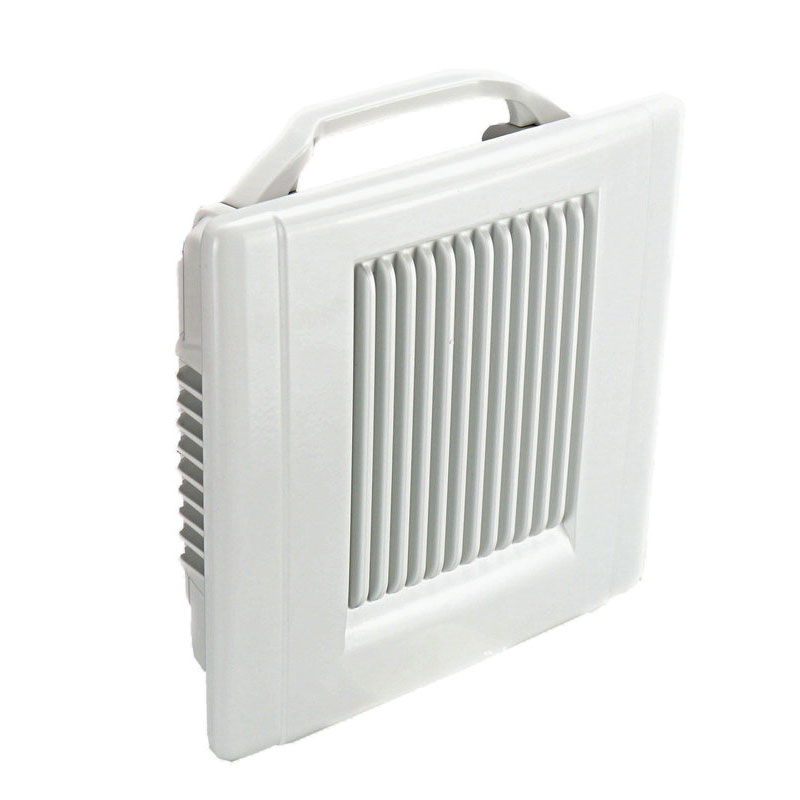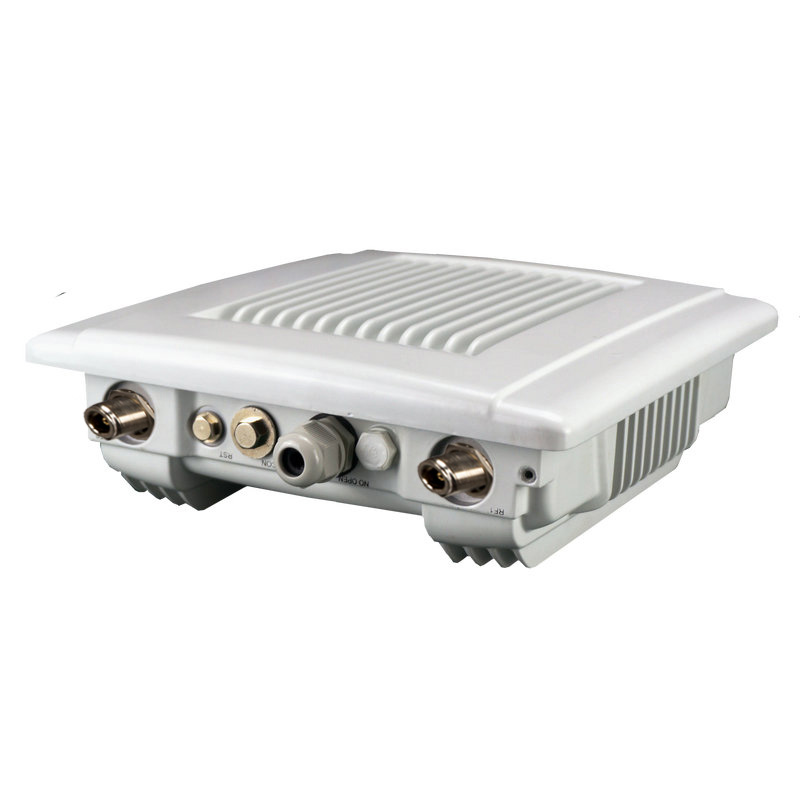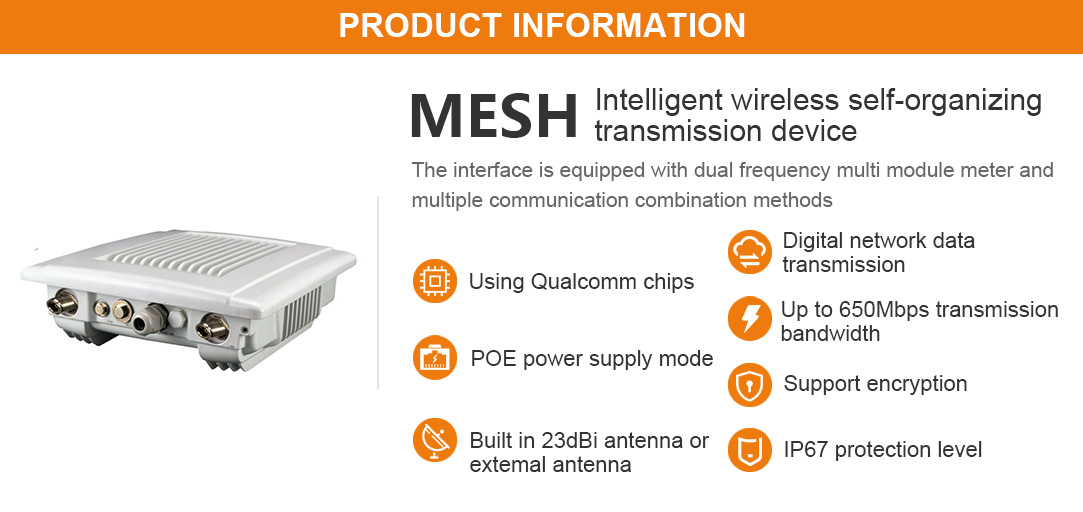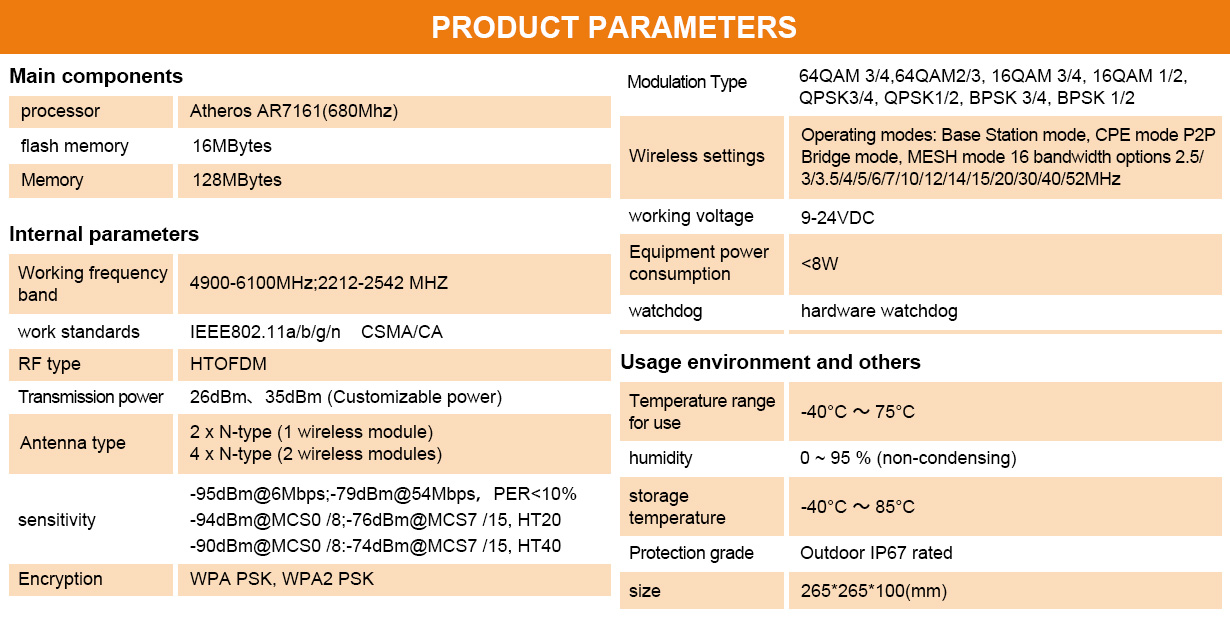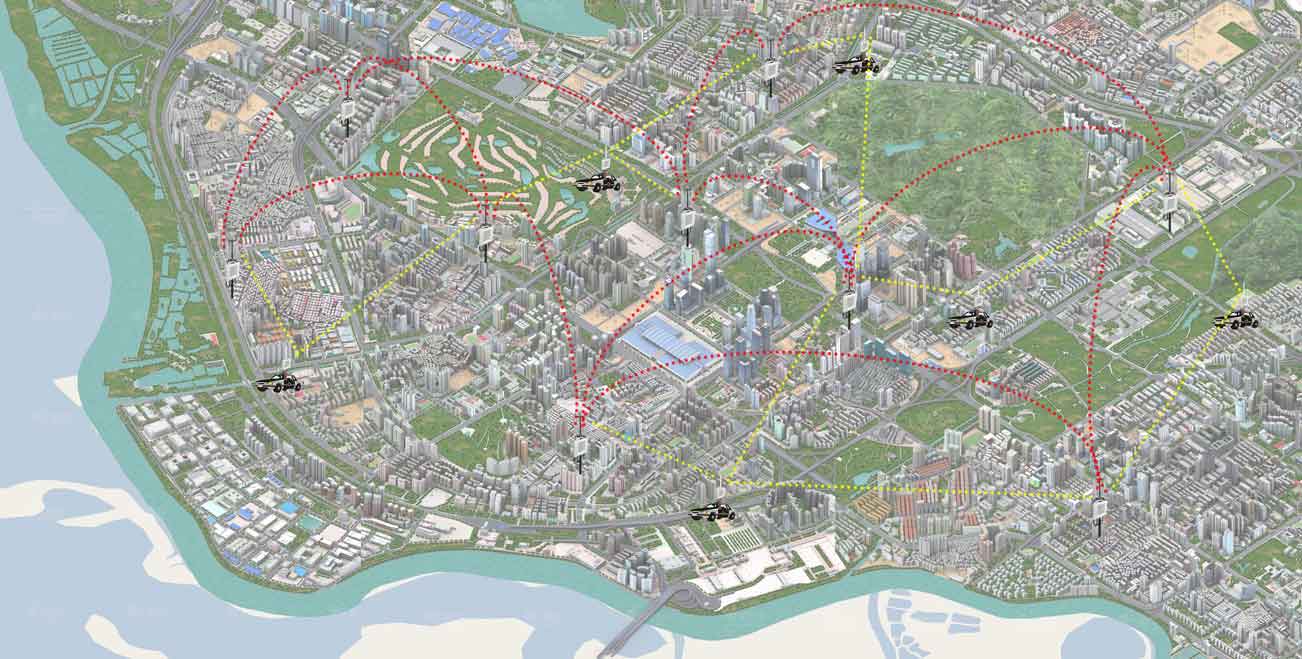1. Hardware architecture
A. Dual-band multi-module interface design, each module has 2.4GHz/5GHz dual-mode transmission function, which can be switched to different frequency transmission when disturbed.
B. Wireless equipment conforms to IEEE802.11a/g/n standard specifications:
Operating frequency: 2.212~2.542GHz, 4.900~6.100GHz
Transmission technology: 2*2 MIMO technology
Transmission rate: 300 Mbit/s *1 for one NIC, 180 Mbps transmission bandwidth
2 NICs 300Mbps*2 with a transmission bandwidth of 280Mbps
C. Higher specification hardware: CPU: Atheros AR7161 (680Mhz), 16MB SPI flash, 128MB DDR SDRAM, which can meet the needs of high-quality image transmission.
D. IP67 waterproof and dustproof grade.
E. -30~75°C working temperature.
F. Support Hardware Watchdog.
G. Support independent VLAN and Ethernet network exchange data link layer or router interconnection function.
H. Metal shell and anti-corrosion treatment.
2. WIFI standard and high-end functions
A. Support dynamic multi-mode egress interface allocation of wireless network to cope with multi-link relay and aggregation data stream transmission.
B. Support wireless client bandwidth control to facilitate the management of wireless transmission traffic.
C. AP/CPE/Bridge/Mesh and other operational functions.
D. Support a variety of bidirectional bandwidth management to facilitate the management of wireless transmission traffic.
E. Support the setting of parameters such as channel/transmission power/rate/maximum distance to facilitate the stability of the transmission link.
F. Support advanced wireless parameter adjustment settings to optimize wireless transmission signal quality and transmission stability.
G. Support wireless node (client) information acquisition to help judge whether the antenna is aligned or not (built-in alignment antenna function).
H. Support the limit on the number of wireless client connections.
I. Support the connection and isolation function of the client user.
J. It has the function of relay jumping backbone redundant connection (redundant online function).
K. Roaming change function.
L. It has the online function of client CPE (interconnection with other manufacturers' products).
M. It has the online function of automatic detection of CPE.
N. Built-in GPS function, which can display the connection status on the UI in the form of coordinates.
O. Support bandwidth adjustment: 2.5MHz, 3MHz, 3.5MHz, 4MHz, 5MHz, 6MHz, 7MHz, 8MHz, 10MHz, 12MHz, 14MHz, 15MHz, 20MHz, 30MHz, 40MHz, 52MHz
P. Support frequency adjustment, the minimum is 2.5MHz to adjust one frequency.
3. Data security and system management
A. It has a service organization code (SSID) wireless security mechanism, which can support on/off/broadcast SSID.
B. It has the MAC Address selection of the fixed AP of the wireless base station, so that the system is not easy to be invaded and can be designated for connection.
C. Wireless base station fixed MAC Address Filtering wireless security mechanism.
D、Capable of WPA/WPA2 PSK/AES (128 bits) encryption.
E. MANAGE HTTP WEB GUI THROUGH WEB BROWSER OPERATION.
F. Support Telnet setting.
G. Support SSH encryption.
H. Support CLI commands for command line setting.
I. Support simple network management SNMP v2c/v3, standard/private MIBs.
J. System log file Syslog.
K. Support management of VLAN tags.
L. Support client network timing NTP Client.
M. Support firmware update/firmware rewrite rollback Firmware upgrade/downgrade.
N. Support dual backup of firmware Dual Images.
O. Support multiple level management.
4. MESH network function
A. Mesh network data transmission with OSI (Open System Interconnection Reference Model) Layer 2 Data Link Layer to achieve fast data tranTQer and automatic healing of links, reduce path selection delay and bandwidth attenuation of multi-hop trunk.
B. It has the ability to automatically find the best transmission path.
C. Automatically disconnect and find the path to restore the connection.
D. Automatic network traffic balancing.
E. Automatically update system node information.
F. Automatically update the system settings through the gateway or server.
G. Support fast automatic path transmission.
H. Support high-speed roaming transmission of logical operations such as signal and transmission rate.








